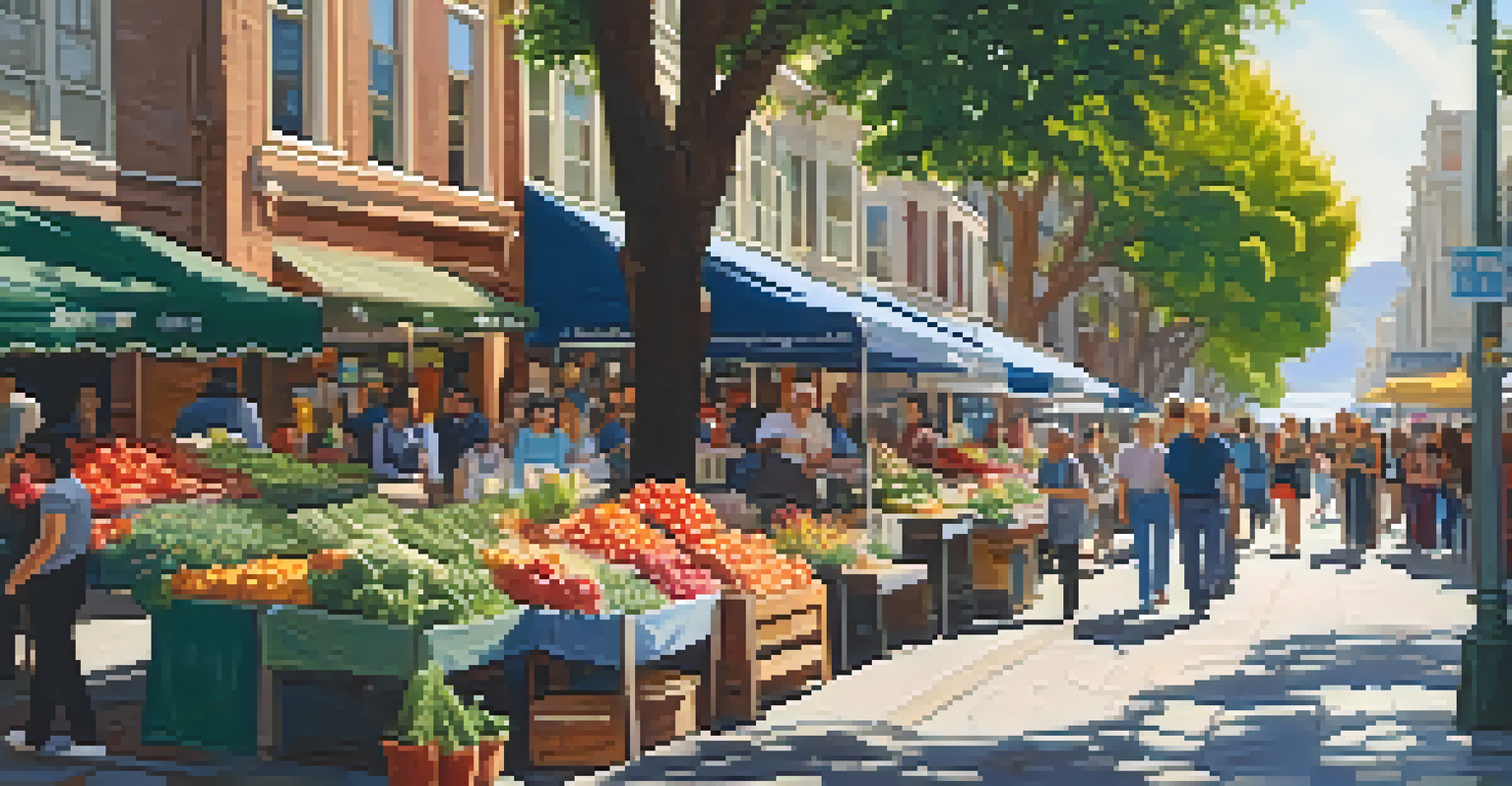Challenges Faced by San Francisco in Preserving Historic Sites

The Importance of Historic Preservation in San Francisco
San Francisco is a city steeped in history, with landmarks that tell the stories of its diverse past. From the iconic Painted Ladies to the Golden Gate Park, these sites are not just buildings; they represent the culture and identity of the community. Preserving these historic sites is crucial for maintaining the city's unique character and attracting tourism, which significantly contributes to the local economy.
Preservation is a form of stewardship, and we have to be responsible for the future of our communities and the stories they tell.
However, with the passage of time, many of these structures face threats from urban development and changing demographics. As newer buildings rise and neighborhoods evolve, the risk of losing these historical gems increases. This highlights the delicate balance between progress and preservation, a challenge that city planners and preservationists must navigate meticulously.
Engaging the community in preservation efforts is vital. When residents understand the importance of their local heritage, they are more likely to advocate for its protection. This grassroots involvement not only fosters a sense of pride but also cultivates a shared responsibility for the city’s historic treasures.
Economic Pressures Affecting Historic Preservation
San Francisco's booming economy leads to rising property values, which can put pressure on historic sites. Developers often see these locations as prime opportunities for new projects, which can conflict with preservation efforts. The financial incentive to demolish or alter historic buildings for modern developments can be overwhelming, making it crucial for preservationists to find funding and support.

Additionally, the high cost of renovations can deter owners from maintaining their historic properties. While tax incentives and grants exist, they may not always be sufficient to cover the expenses associated with preserving older buildings. This economic reality can lead to a slow deterioration of historic sites, as owners struggle to balance financial viability with the desire to maintain their property's heritage.
Preservation vs. Urban Development
Historic sites in San Francisco face threats from urban development, highlighting the need for a balance between progress and preservation.
To combat these challenges, innovative funding solutions and partnerships with private organizations may be necessary. By creating a collaborative environment, stakeholders can work together to find sustainable ways to preserve the city’s historic fabric without sacrificing development.
Regulatory Challenges in Preservation Efforts
Navigating the regulatory landscape in San Francisco can be a daunting task for preservationists. The city has a complex framework of laws and guidelines designed to protect historic sites, but these can sometimes hinder timely restoration efforts. For example, lengthy approval processes can delay projects, leading to further deterioration of at-risk buildings.
The past is not dead; it is not even past.
Moreover, the regulations can be inconsistent, creating confusion among property owners and developers. Some may not fully understand what is required to maintain a historic site, leading to unintentional violations or poor preservation practices. This underscores the need for clearer communication and education regarding preservation policies.
Advocates for historic preservation often push for streamlined processes that still maintain protective measures. By simplifying regulations without compromising the integrity of historic sites, San Francisco can foster an environment where preservation and development can coexist more harmoniously.
Community Engagement in Historic Preservation
Community involvement is essential for successful historic preservation. Engaging local residents in discussions about what sites are significant to them fosters a sense of ownership and pride. This grassroots approach can lead to more robust advocacy for preserving historical landmarks, as community members rally together to protect their heritage.
Events such as heritage walks, workshops, and open forums can help educate the public about the importance of historic sites. When individuals see the value in their local history, they are more likely to participate in preservation efforts. Building these connections can transform passive residents into active stewards of their neighborhoods.
Community Engagement is Key
Involving local residents in preservation efforts fosters pride and responsibility for protecting the city's historic treasures.
Furthermore, partnerships between local organizations and governmental bodies can amplify community voices in preservation decisions. By collaborating and sharing resources, these groups can create initiatives that not only raise awareness but also lead to actionable outcomes in protecting historic sites.
The Impact of Climate Change on Historic Sites
Climate change poses significant risks to San Francisco's historic sites, with rising sea levels and extreme weather events threatening their structural integrity. Coastal landmarks, in particular, are at risk of erosion and flooding, necessitating immediate attention from preservationists. This adds a layer of urgency to the already complex challenge of maintaining these sites.
Moreover, the increased frequency of wildfires and heat waves can damage buildings and landscapes that have stood for generations. Preservation strategies must evolve to incorporate climate resilience, ensuring that historic sites can withstand these environmental changes. This might involve innovative engineering solutions that respect the original architecture while enhancing durability.
As climate change continues to affect urban environments, integrating sustainability into preservation practices becomes essential. By adopting eco-friendly restoration techniques and materials, San Francisco can protect its historical treasures while also promoting a healthier future for the city.
Gentrification and Its Effects on Historical Neighborhoods
Gentrification is reshaping many neighborhoods in San Francisco, often leading to the displacement of long-time residents. As more affluent individuals move in, the character of these historic areas can change dramatically, threatening the very essence of what makes them unique. This shift can create tension between new arrivals and existing community members, complicating preservation efforts.
Moreover, as property values rise, the cost of maintaining historic buildings can become prohibitive for long-time residents. Many may feel forced to sell their homes or businesses, resulting in a loss of the community's historical narrative. This highlights the need for policies that balance development with the preservation of cultural heritage.
Climate Change Threatens History
Rising sea levels and extreme weather events pose significant risks to historic sites, necessitating urgent preservation strategies.
Addressing gentrification requires a multifaceted approach that includes affordable housing initiatives and community-led preservation efforts. By prioritizing the voices of existing residents and involving them in decision-making, San Francisco can work towards a future that respects both its history and its evolving demographic landscape.
Technology’s Role in Historic Preservation
Technology is playing an increasingly vital role in historic preservation efforts across San Francisco. Digital mapping and 3D modeling allow preservationists to document and analyze historic sites in ways that were previously unimaginable. These modern tools can help identify structural issues and plan restoration projects more effectively, ensuring that the integrity of the sites is maintained.
Social media and online platforms also provide opportunities for public engagement, enabling individuals to share their stories and connect over their shared love for the city’s history. This can foster a sense of community and pride, encouraging more residents to get involved in preservation efforts. By amplifying local voices, technology can help reshape the narrative around historic sites.

Additionally, virtual reality (VR) and augmented reality (AR) can create immersive experiences that educate visitors about the significance of historic locations. These technologies can bridge the gap between the past and present, making history more accessible and engaging for younger generations.